Zz plant, or Zamioculcas zamiifolia, is a popular houseplant known for its low-maintenance care requirements. However, even the most neglectful plant parent can run into problems with root rot. Root rot is a fungal disease that can quickly kill a zz plant if left untreated. Luckily, there are a few simple steps you can take to save your plant from root rot.
Signs of Root Rot in ZZ Plant
If you notice your ZZ plant’s leaves turning yellow, wilting, or drooping, it could be a sign of root rot. If you think your plant has root rot, it’s important to take action immediately. Root rot is a serious problem that can kill your plant.
Here are some signs to look for that may indicate your plant has root rot:
Yellowing or wilting leaves: This is one of the most common signs of root rot. If the leaves of your plant are turning yellow or wilting, it’s a sign that the roots are not getting enough water or nutrients. 1.
Drooping leaves: Another common sign of root rot is drooping leaves. If the leaves of your plant are drooping, it’s a sign that the roots are not getting enough support. 2.
Brown or black roots: If you notice the roots of your plant are brown or black, it’s a sign that they are rotting. 3.
4. Soft or mushy roots: If the roots of your plant are soft or mushy, it’s a sign that they are decaying.

If you notice any of these signs, it’s important to take action immediately. If the roots are black or brown, they are probably rotting. If you think your plant has root rot, you should remove it from the pot and inspect the roots. If you find any of these signs, you should trim away the affected roots and replant the plant in fresh potting mix. If the roots are soft or mushy, they are probably decaying. Root rot is a serious problem that can kill your plant.
Loss of Vigor
Root rot is caused by overwatering, which leads to fungal growth. If you notice your zz plant’s leaves drooping and turning yellow, it’s likely suffering from root rot. To save your plant, you’ll need to take immediate action to improve drainage and reduce watering.
If the pot doesn’t have drainage holes, it’s time to repot in a new pot with holes. First, check the pot for drainage holes and make sure they’re not blocked.
Next, improve the plant’s drainage by adding gravel or perlite to the potting mix.
Be sure to water deeply, so the water reaches the roots. Finally, reduce watering frequency and allow the soil to dry out between waterings.

With proper care, your zz plant will soon recover from root rot.
Leaves Turning Brown
If the roots are brown and mushy, this is a sure sign of root rot. If you notice that your plant’s leaves are beginning to turn brown, the first thing you should do is check the roots. When it comes to leaves turning brown, there are a few things that can be done in order to save your plant. You may also need to repot the plant in fresh, dry soil. In order to save your plant from root rot, you will need to water it less and allow the roots to dry out. First and foremost, it is important to catch the issue early on and address it immediately. If you catch the issue early enough, your plant should recover and the leaves will return to their normal color. Root rot is caused by too much water and can be deadly to your plant.
Stem Rot
Stem rot is caused by a build-up of water in the plant’s stem, which can lead to rotting and eventually death. Zz plants are known to be pretty tough, but they’re not invincible. One of the most common problems zz plants face is stem rot.
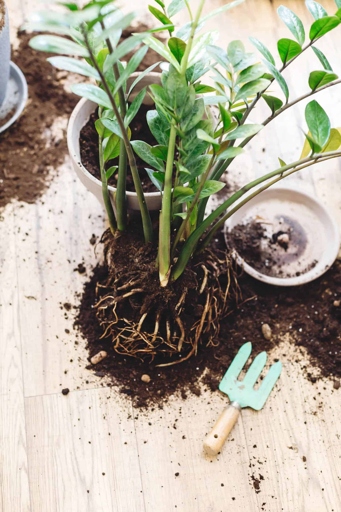
If you think your zz plant has stem rot, the first thing you need to do is remove it from the pot. Make sure the pot has drainage holes so that water can’t build up and cause stem rot again. Cut off any affected parts of the plant, and then repot it in fresh, dry soil.
Once you’ve repotted your zz plant, water it sparingly. Allow the soil to dry out completely between waterings. This will help to prevent stem rot from occurring again.
Be sure to follow the directions on the fungicide label carefully. If your zz plant is still showing signs of stem rot, you may need to use a fungicide to kill the fungus that’s causing the problem.
By taking action quickly and repotting the plant in fresh, dry soil, you can give your plant the best chance of survival. With a little care, you can save your zz plant from stem rot.
Yellowing and Wilting
If you think your plant has root rot, there are a few things you can do to save it. When your ZZ plant’s leaves start to yellow and wilt, it’s a sign that the plant is suffering from root rot. Root rot is a common problem with ZZ plants, and it’s often caused by overwatering.
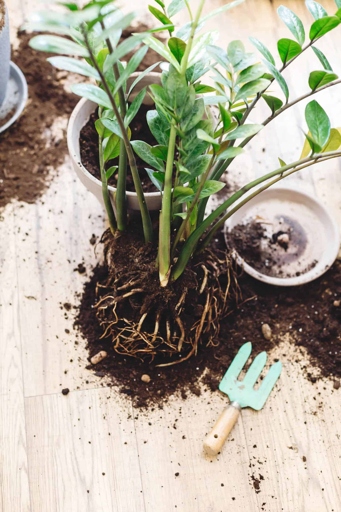
First, take a look at the roots. If they’re black or mushy, they’re probably rotten. Then, repot the plant in fresh, well-draining potting mix. Cut away any rotten roots with a sharp knife. Be sure to water it carefully, only giving it enough water to moisten the potting mix. Allow the top inch of soil to dry out before watering again.
With some care, you should be able to save your ZZ plant from root rot. Avoid getting water on the leaves, as this can cause them to rot. If your plant is still wilting, you can try giving it a little bit of water with a syringe or watering can.
Mushy Roots
If you notice your ZZ plant’s roots are looking mushy, it’s likely they’re suffering from root rot. To save your plant, follow these steps: This can be caused by overwatering, poor drainage, or compacted soil.
Remove the plant from its pot and inspect the roots. 1. Cut away any mushy, blackened roots.

Repot the plant in fresh, well-draining potting mix. 2.
Allow the plant to drain fully after watering. 3. Water only when the top inch of soil is dry.
4. Place the plant in a bright, indirect light.
By following these steps, you can save your ZZ plant from root rot and get it back to good health.
Moldy Soil
Moldy soil is one of the most common problems that can affect your plants. Root rot is caused by a build-up of water in the soil, which creates an environment that is perfect for mold to grow. If you notice that your plant’s leaves are turning yellow or brown, or that the stem is softening, it’s likely that the plant has root rot.
If you see any that are black or mushy, cut them away with a sharp knife. To save your plant from root rot, you’ll need to take some immediate action. Be sure to water it regularly, but don’t overdo it – too much water can lead to root rot. Next, replant the plant in fresh, dry soil. First, remove the plant from the pot and inspect the roots.
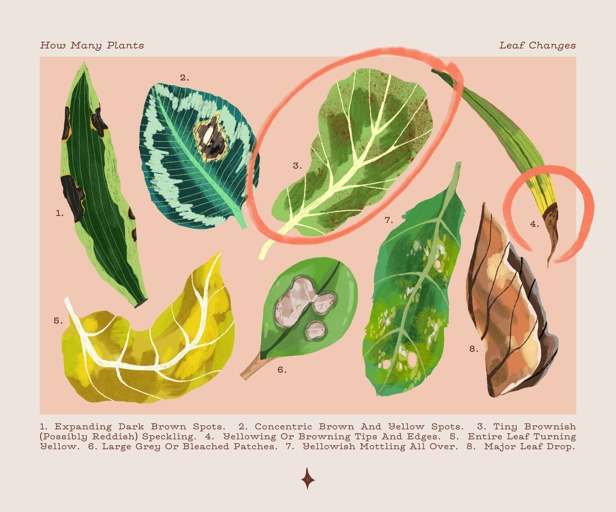
In this case, it’s best to start over with a new plant. If you take these steps, you should be able to save your plant from root rot. However, if the problem is severe, it’s possible that the plant will not recover.
How to Treat Zz Plant Root Rot
If they are brown and mushy, it’s likely that the plant has root rot. If you think your plant has root rot, the first step is to check the roots. Zz plant root rot is a common problem that can be caused by overwatering or poor drainage.
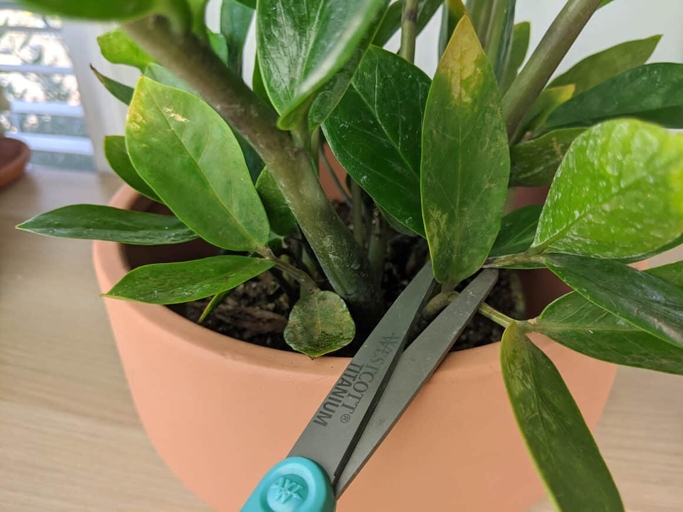
To treat root rot, you’ll need to remove the affected roots and replant the plant in fresh, well-draining soil. Be sure to water the plant carefully, as too much water can cause root rot. If the plant is severely affected, you may need to cut away some of the leaves to help it recover.
With proper care, your zz plant should be able to recover from root rot. However, it’s important to be vigilant about watering and drainage to prevent the problem from happening again.
Repotting
Follow these steps to repot your Zz plant: If you notice that your Zz plant is wilting, yellowing, or otherwise not looking its best, it may be time to repot. Repotting can save your plant from root rot, which can be caused by overwatering or poor drainage.
Be sure to choose a pot with drainage holes. 1. Choose a new pot that is slightly larger than the current one.
Add fresh potting mix to the new pot. 2.
3. Be careful not to damage the roots. Gently remove your Zz plant from its current pot.
Place the plant in the new pot and fill in around it with potting mix. 4.
Water the plant well and place it in a bright, indirect light. 5.

With proper care, your Zz plant should recover quickly and be back to its beautiful self in no time.
Water the plant thoroughly so the roots and soil will loosen.
This will help to loosen the roots and soil so that you can get a better idea of the extent of the damage. The first step to saving your plant is to water it thoroughly. Once you’ve assessed the damage, you can take steps to improve the drainage of your plant and prevent further root rot. Root rot is a common problem for plants that are overwatered or have been sitting in water for too long. If you notice your ZZ plant’s leaves drooping and the stem feels limp, it’s likely suffering from root rot.
Carefully remove the root ball from the pot.
Root rot is a common problem for Zz plants, and it can be fatal if left untreated. Once you have removed all of the affected roots, you can replant the Zz plant in fresh potting soil. Once the root ball is removed, you will need to inspect the roots for signs of rot. If you see any black or brown spots on the roots, you will need to trim away the affected areas. The first step in treating root rot is to carefully remove the root ball from the pot. This can be a difficult task, as the roots of the Zz plant are very delicate. If you notice that your Zz plant is starting to wilt, it may be a sign of root rot.
Examine the roots and look for the rotten portions.
Once you’ve removed the rotten roots, you can replant your Zz plant in fresh, well-draining potting mix. Be sure to water it regularly, and keep an eye out for any new signs of root rot. If you see any, gently remove them with a sharp knife. When it comes to saving your Zz plant from root rot, the first step is to examine the roots and look for the rotten portions. With a little care, your Zz plant should make a full recovery.
Trim the rotten roots.
To save your plant, you’ll need to trim the rotten roots and replant in fresh soil. If you notice that your ZZ plant’s leaves are yellowing or wilting, it’s likely that the roots are rotten.
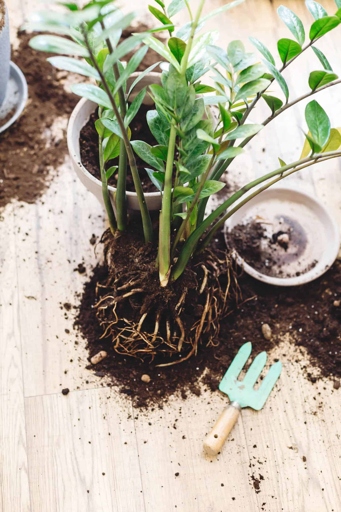
Here’s how to do it:
1. Carefully remove your ZZ plant from its pot.
Inspect the roots and trim away any that are brown or mushy. 2.
3. Repot the plant in fresh, well-draining potting mix.
4. Water lightly and keep the plant in a warm, bright spot.
With a little care, your ZZ plant will soon be back to its healthy self!
Treat the roots with fungicide.
There are a few different fungicides that you can use, but make sure to read the labels carefully and follow the instructions. This will help to prevent the spread of the disease and keep your plant healthy. When it comes to saving your ZZ plant from root rot, one of the most important things you can do is treat the roots with fungicide.
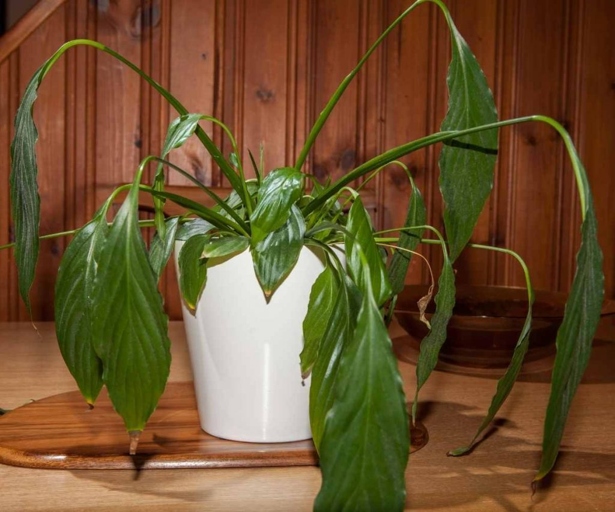
Root rot can be a serious problem for ZZ plants, but by taking some preventative measures and treating the roots with fungicide, you can help to keep your plant healthy and disease-free.
Prepare a clean and sterilized potting mix.
If you’re potting a Zz plant, it’s important to use a clean and sterilized potting mix. Here’s how to do it:
Start by sterilizing your potting mix. 1. You can do this by boiling it for 10 minutes, or by baking it in the oven at 200 degrees Fahrenheit for 30 minutes.

Once your potting mix is sterilized, let it cool completely before using it. 2.
3. Sterilize it by boiling it for 10 minutes, or by baking it in the oven at 200 degrees Fahrenheit for 30 minutes. When you’re ready to pot your Zz plant, make sure to use a clean pot.
Once your pot is sterilized, add your potting mix and plant your Zz plant. 4.
Water your plant well, and make sure to keep the potting mix moist but not soggy. 5.
By following these steps, you’ll ensure that your Zz plant gets off to a healthy start and is less likely to experience root rot.
Repot to a new and clean container.
Be sure to use a well-draining potting mix and water the plant regularly. This will give the plant a chance to recover and the roots will have a chance to grow. The first step is to repot the plant in a new and clean container. When you notice your zz plant’s leaves turning yellow, it’s a sign that the plant is suffering from root rot. If you don’t act quickly, the plant will die.
Using Appropriate Soil Mix
When it comes to saving your Zz plant from root rot, using the appropriate soil mix is key. The best way to ensure that your plant has the right mix of soil is to ask your local nursery or gardening center for advice.
First, the mix should be well-draining. There are a few things to keep in mind when choosing a soil mix for your Zz plant. This will help to keep the roots of your plant healthy. Second, the mix should be rich in organic matter. This means that it should not retain water for long periods of time.
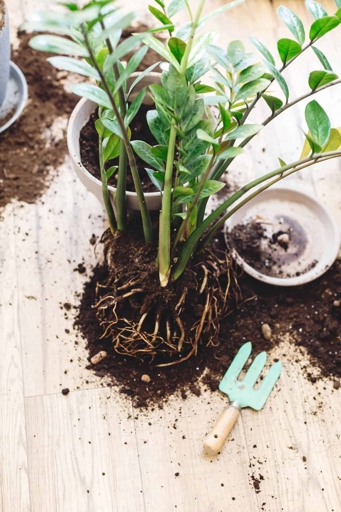
With the right soil mix, you can save your Zz plant from root rot and keep it healthy for years to come. If you have a small plant, you will not need as much soil as you would for a larger plant. Finally, make sure that the soil mix you choose is appropriate for the size of your Zz plant.
Watering After Repot
Watering is key, but you’ll need to be careful not to overwater. If you’ve recently repotted your Zz plant, you’ll need to take extra care to make sure it doesn’t suffer from root rot.
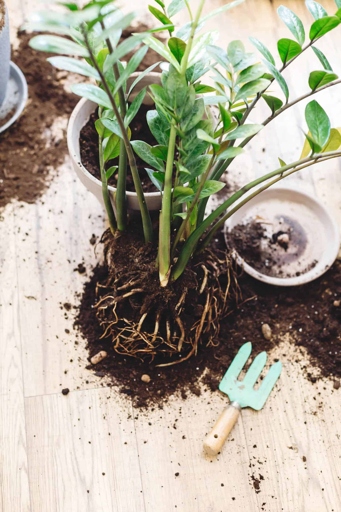
Allow the top inch or so of soil to dry out before watering again. Be sure to empty any water that collects in the saucer beneath the pot.
Remove the plant from its pot and inspect the roots. If they’re black or mushy, you’ll need to cut away the affected roots and repot the plant in fresh, dry soil. If you see any signs of root rot, such as yellowing leaves or mushy stems, take action immediately.
Care After Repotting
When you repot your Zz plant, it is important to take care of it properly afterwards to prevent root rot. Here are some tips on how to do that:
Water your plant regularly. 1. Zz plants need to be watered about once a week, and more often if they are in a pot without drainage holes.
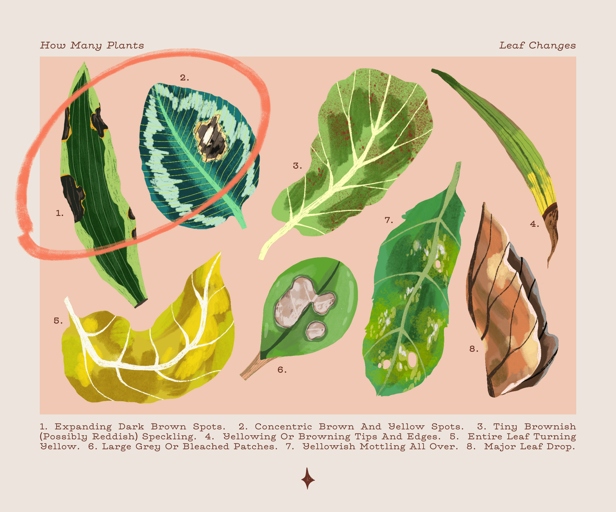
This will help to prevent the roots from sitting in water, which can lead to root rot. Make sure the pot has drainage holes. 2.
Zz plants do best in bright, indirect light, so make sure to place it in a spot where it will get plenty of light. Place your plant in a bright, indirect light. 3.
4. Zz plants need to be fertilized about once a month to keep them healthy. Fertilize your plant monthly.
By following these tips, you can help to prevent root rot and keep your Zz plant healthy.
Propagation
If you think your zz plant has root rot, don’t despair! Zz plants are known for being tough and resilient, but even these plants can succumb to root rot if they’re not cared for properly. There are a few things you can do to save it.
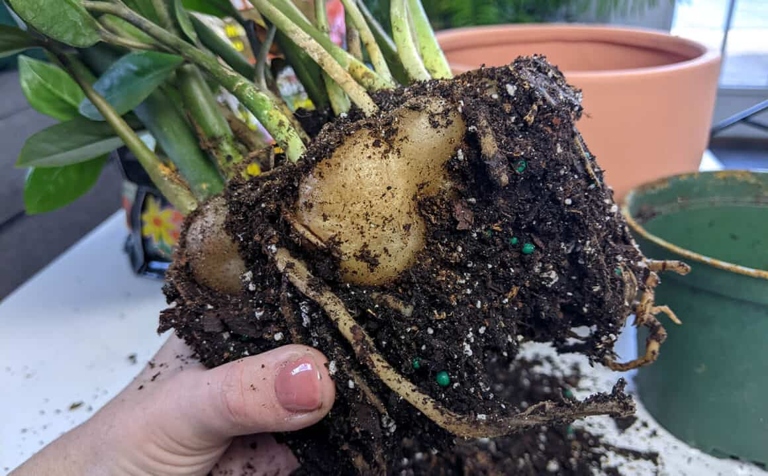
First, take a close look at the plant. If the plant is still healthy looking, then it’s probably just suffering from drought stress and you can simply water it more frequently. If the leaves are wilted, yellow, or brown, and the stem feels mushy, then it’s likely that the plant has root rot.
If the plant does have root rot, the first step is to remove it from the pot and inspect the roots. Cut away the affected roots with a sharp knife, being careful not to damage the healthy roots. If they’re mushy or blackened, then they need to be removed.
With a little care, your zz plant will soon be looking good as new! Water it well and place it in a bright, warm spot. Once you’ve removed the affected roots, repot the plant in fresh, sterile potting mix.
Leaf Cuttings
This is a relatively simple process and can be done with a sharp knife or garden shears. One option is to take leaf cuttings. If your ZZ plant is suffering from root rot, don’t despair. There are a few things you can do to save your plant.
First, cut off a few healthy leaves from the plant. Be sure to keep the leaves upright. Make sure each leaf has a bit of stem attached. Next, place the leaves in a pot or container filled with moist potting mix.
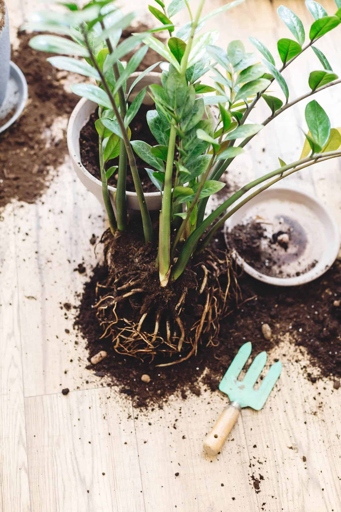
Once they’ve rooted, you can transplant them into individual pots. With a little care, your ZZ plant will be good as new. Place the pot in a warm, bright location and wait for the leaves to root.
Stem Cuttings
One way to save your plant is by taking stem cuttings. If your zz plant is showing signs of root rot, don’t despair – there’s still hope! Zz plants are known to be tough and resilient, but even they can succumb to root rot if they’re not cared for properly. Here’s a step-by-step guide on how to do it:
1. Cut off a healthy section of stem, making sure to include at least 2-3 leaves.
Dip the cut end of the stem in rooting hormone. 2.
Plant the stem in a pot filled with well-draining potting mix. 3.
4. Water the potting mix well and keep it moist.
Place the pot in a warm, bright location. 5.

6. Once the new growth is well established, you can transplant the cutting into its own pot. After a few weeks, you should see new growth.
Taking stem cuttings is a great way to save your zz plant from root rot. With a little patience and care, you can have a healthy, thriving plant in no time!
Causes of Zz Plant Root Rot
Poor drainage can also cause root rot, as the roots can become waterlogged and start to decay. Finally, if the plant is in an area with poor air circulation, the roots can become suffocated and rot. If the plant is in a pot that is too small, the roots can become constricted and rot. Zz plants are susceptible to root rot, which can be caused by several factors. Overwatering is the most common cause, as it can lead to fungal growth that attacks the roots.
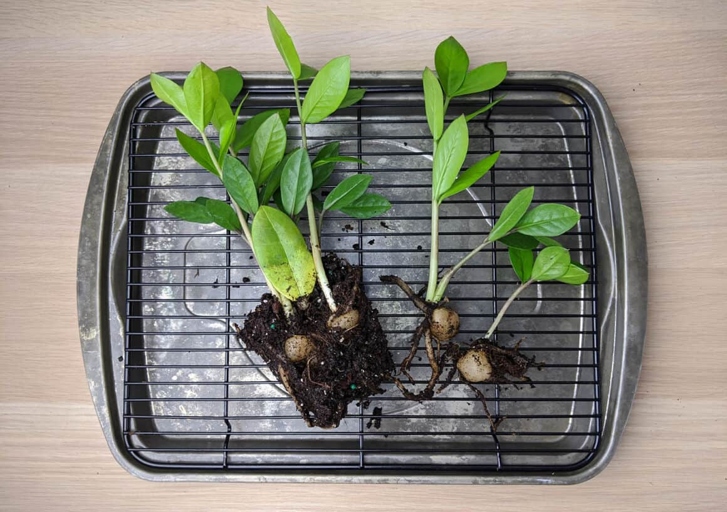
If they are black or mushy, they are likely rotten. The first step is to remove the plant from its pot and inspect the roots. Cut away any affected roots and repot the plant in fresh, sterile potting mix. With proper care, your plant should recover from root rot and continue to thrive. Be sure to water the plant carefully, as too much or too little water can further damage the roots. If you suspect that your plant has root rot, it is important to take action immediately. Root rot is a serious problem for zz plants, as it can quickly kill the plant.
Overwatering
When you do water your Zz plant, make sure to allow the soil to dry out completely before watering again. This means that they don’t need to be watered as often as other houseplants. Once the soil is dry, you can start watering your plant again. It’s important to remember that Zz plants are native to arid climates and can store water in their thick, fleshy leaves. If you think your plant is overwatered, the best course of action is to stop watering it and allow the soil to dry out completely. Overwatering is one of the most common problems when it comes to houseplants. If you notice that your Zz plant is wilting, it’s leaves are yellowing, or it’s stem is soft, these are all signs that it is overwatered.
How to Fix:
If the plant is still alive, you can try to save it by following these steps: If you think your ZZ plant has root rot, the first step is to check the roots. If they’re mushy or black, it’s likely that the plant has root rot.
Cut off all the affected roots. 1.
Repot the plant in fresh, well-draining potting mix. 2.
3. Water the plant carefully, making sure not to overwater.
Keep the plant in a warm, bright spot. 4.
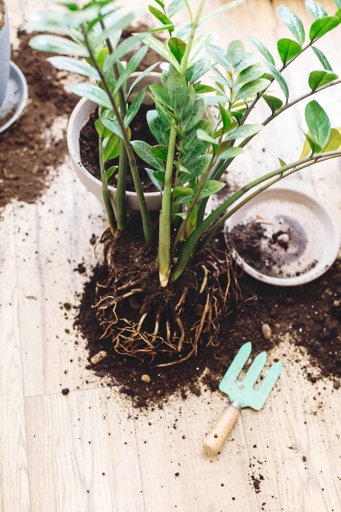
If you catch root rot early, there’s a good chance you can save your ZZ plant. But if the roots are too far gone, it’s best to start over with a new plant.
Always check the soil to assess its moisture needs.
Be sure to water deeply and evenly, saturating the entire root ball. If the soil is dry to the touch, it’s time to water. When it comes to watering your Zz plant, always check the soil to assess its moisture needs. Allow the soil to dry out completely between waterings to prevent root rot.
Let the soil dry before watering
If you notice that your Zz plant’s leaves are wilting, it’s likely that the plant is suffering from root rot. The first step in treating root rot is to let the soil dry out completely before watering again. With proper care, your Zz plant will soon be back to its healthy self! This will give the roots a chance to recover from the water damage. Root rot is caused by overwatering, and it can be fatal to your plant if not treated immediately. If the root rot is severe, you may need to repot the plant in fresh, dry soil.
Water the soil deeply.
When it comes to watering your ZZ plant, it’s important to water the soil deeply. This will ensure that the roots are getting enough water. This means that you should water the plant until the water starts to run out of the bottom of the pot.
In this case, you’ll need to water the plant more frequently. If you notice that your ZZ plant is starting to wilt, it’s likely that the roots are not getting enough water. However, be sure not to overwater, as this can lead to root rot.

If you think that your ZZ plant is suffering from root rot, it’s important to take action immediately. Then, you’ll need to remove the plant from its pot and inspect the roots. If they are mushy or black, they are likely rotting. The first step is to stop watering the plant. You can try to save the plant by trimming away the affected roots and repotting in fresh soil.
Do not forget to drain excess water.
To save your plant, you will need to remove it from the pot and drain the excess water. Allow the plant to dry out completely before replanting it in fresh soil. Root rot is caused by too much water and can be fatal to your plant. If you notice that your plant is beginning to wilt, it may be a sign of root rot.
Adjust watering frequency as needed.
Water your plant less frequently, and be sure to allow the soil to dry out completely between waterings. The first step to saving your plant is to adjust your watering schedule. Root rot is caused by too much water, which can lead to fungal growth. If you see any signs of fungal growth, such as mold or mildew, be sure to remove it immediately. With proper care, your Zz plant should recover from root rot and be back to its healthy self in no time. If you notice that your Zz plant is wilting, it’s likely due to root rot.
Poor or Lack of Drainage
Water that does not drain properly from the pot will cause the roots to rot, which will eventually kill the plant. To save your plant, you will need to improve the drainage. If you notice that your plant is wilting, even when you have recently watered it, it is likely due to poor drainage.
This will help to increase the drainage and prevent the roots from sitting in water. Another way to improve drainage is to water your plant less often. There are a few ways to improve drainage for your plant. Allowing the soil to dry out between watering will help to prevent root rot. One way is to add rocks or gravel to the bottom of the pot.
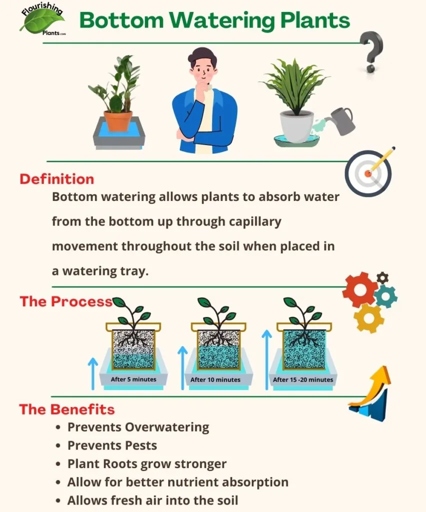
Water that does not drain properly from the pot will cause the roots to rot, which will eventually kill the plant. To save your plant, you will need to improve the drainage. If you notice that your plant is wilting, even when you have recently watered it, it is likely due to poor drainage.
This will help to increase the drainage and prevent the roots from sitting in water. Another way to improve drainage is to water your plant less often. There are a few ways to improve drainage for your plant. Allowing the soil to dry out between watering will help to prevent root rot. One way is to add rocks or gravel to the bottom of the pot.
If you have tried these methods and your plant is still not improving, you may need to repot it. With proper drainage, your plant should start to improve. Be sure to water the plant less frequently, allowing the soil to dry out between watering. Use a pot that has drainage holes and add fresh potting mix.
How to Fix:
If you notice your ZZ plant’s leaves turning yellow, wilting, or otherwise looking unhealthy, it’s likely that the plant has root rot. Luckily, there are a few things you can do to save your ZZ plant from root rot. Root rot is a serious problem that can kill your plant if left untreated.
If you see any black or brown roots, those are the ones that are affected. First, you’ll need to remove the plant from its pot and check the roots for signs of rot. Cut away any affected roots with a sharp knife, being careful not to damage the healthy roots.

Be sure to water the plant carefully, as too much water can further damage the roots. Next, you’ll need to replant the ZZ plant in fresh, well-draining potting mix.
Finally, give your plant some time to recover. With proper care, your ZZ plant should soon be back to its healthy self.
Poor Drainage Capacity of Soil
This can be caused by a number of factors, including compacted soil, poor drainage in the pot, or a plant that is too large for its pot. Poor drainage is often the culprit. The first step is to identify the problem. If you have a plant that is suffering from root rot, it is important to take action immediately.
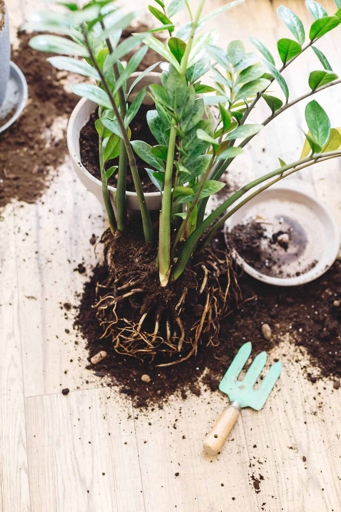
This may involve repotting the plant in a pot with better drainage, or adding a drainage layer to the existing pot. Once you have identified the problem, you need to take steps to improve the drainage. If the plant is too large for its pot, you may need to transplant it to a larger pot.
Improving the drainage around your plant will help to prevent root rot and keep your plant healthy.
How to Fix:
If they’re mushy or black, it’s time to take action. If you think your ZZ plant has root rot, the first step is to check the roots.
Here’s how to save your ZZ plant from root rot:
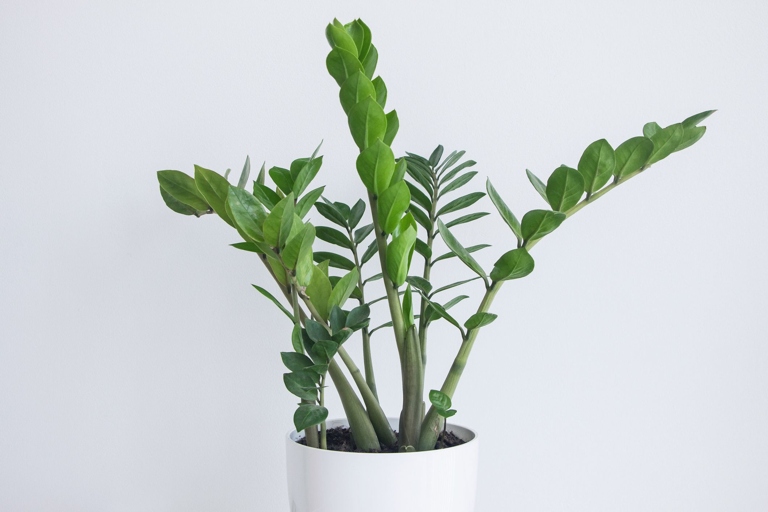
Cut off any affected roots. 1.
Repot the plant in fresh, well-draining potting mix. 2.
Water regularly, but don’t overwater. 3.
Keep an eye on the roots and cut off any new affected ones. 4.
With a little care, your ZZ plant will soon be back to its healthy self.
Pathogenic Infection
If not treated properly, pathogenic infection can quickly kill your plant. Here are a few tips to help you save your Zz plant from root rot: Pathogenic infection is one of the most common problems that can affect your Zz plant.

Remove any affected roots. 1. If you see any roots that are black or mushy, cut them off with a sharp knife.
Treat the remaining roots with a fungicide. This will help to kill any remaining pathogens and prevent further infection. 2.
Repot your plant in fresh, sterile potting mix. 3. Be sure to use a pot that has drainage holes to allow excess water to escape.
Avoid overwatering, as this can contribute to root rot. Water your plant carefully. 4. Allow the soil to dry out slightly between watering.
By following these steps, you can save your Zz plant from root rot and keep it healthy for years to come.
How to Fix:
There are steps you can take to save your plant. If you believe your Zz plant is suffering from root rot, don’t despair.
Cut away any rotted roots with a sharp knife. If they are black or mushy, they are probably rotted. First, remove the plant from its pot and inspect the roots.
Next, replant the Zz plant in fresh, well-draining potting mix. Be sure to choose a pot that is only slightly larger than the root ball.
Water the plant deeply, then allow the soil to dry out completely before watering again. Be sure to empty any water that collects in the saucer beneath the pot.
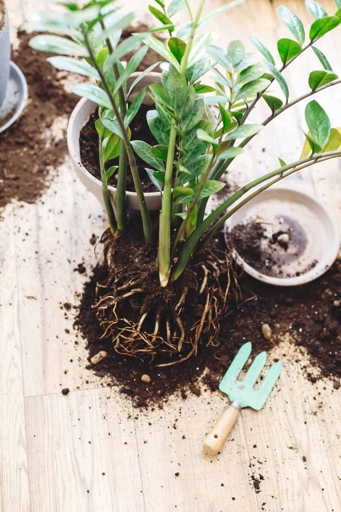
With proper care, your Zz plant should recover from root rot and continue to thrive.
Inappropriate Size of Pots
So, if you’re growing a ZZ plant in a pot that’s too large, you may be inadvertently increasing the risk of root rot. That’s because this tropical beauty is susceptible to root rot, a condition that can be caused by overwatering. When it comes to pots, size does matter—at least when you’re growing a ZZ plant.
And be sure to use a well-draining potting mix to help keep the roots from getting too soggy. When selecting a pot, make sure it’s only slightly larger than the root ball of your plant. The good news is that root rot is relatively easy to avoid if you choose the right size pot for your ZZ plant.
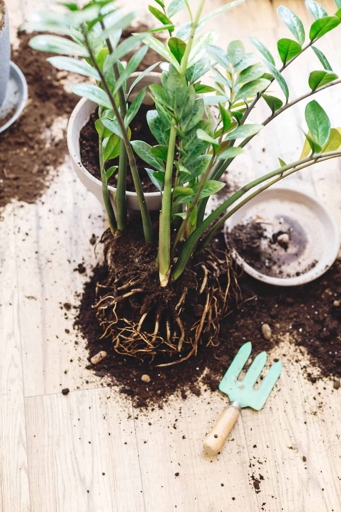
Just be sure to give it the right size pot and the right growing conditions, and you’ll be rewarded with a beautiful, low-maintenance houseplant. With a little care, you can keep your ZZ plant healthy and thriving for years to come.
How to Fix:
Root rot is a common problem for ZZ plants, and it’s important to take action immediately if you suspect that your plant has root rot. If you notice that your ZZ plant’s leaves are wilting, yellowing, or drooping, it’s likely that the plant is suffering from root rot. Here are the steps you need to take to fix your ZZ plant’s root rot:
Cut away any affected roots with a sharp knife. Remove the plant from its pot and inspect the roots. 1. If you see any roots that are black or mushy, these need to be removed.
Repot the plant in fresh, sterile potting mix. Be sure to use a pot that has drainage holes to prevent the roots from sitting in water. 2.
3. Allow the soil to dry out somewhat between watering. Water the plant carefully, making sure not to overwater.

4. Place the plant in a bright, indirect light.
With proper care, your ZZ plant should recover from root rot and be back to its healthy self in no time! Monitor the plant closely and continue to remove any affected roots as needed. 5.
Low Temperature
If you notice your ZZ plant’s leaves drooping and turning yellow, it could be a sign of root rot. Root rot is caused by too much water and can be fatal to your plant. If they are mushy or black, it’s time to take action. The first step is to check the roots.
Be sure to remove any affected roots and dispose of them. You may also need to provide extra drainage by adding rocks or gravel to the bottom of the pot. The best way to save your ZZ plant from root rot is to repot it in fresh, well-draining potting mix.

Once you’ve repotted your plant, water it sparingly. If you notice the leaves drooping again, it’s probably because you’re watering too often. Allow the soil to dry out completely between waterings. Cut back on watering and your plant should recover.
How to Fix:
Root rot is caused by too much water and can quickly kill a plant. Luckily, it’s fairly easy to fix. If you notice your Zz plant’s leaves turning yellow and wilting, it’s likely that the plant has root rot.
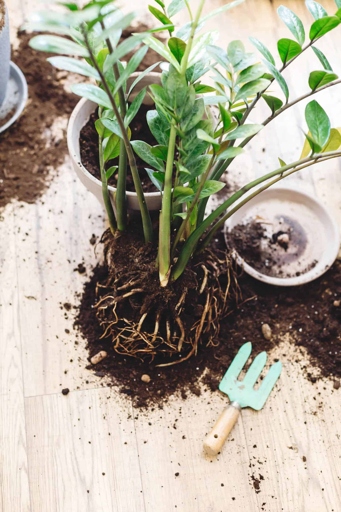
If they’re mushy or black, they’re probably rotten. First, remove the plant from its pot and check the roots. Cut away any rotten roots, being careful not to damage the healthy roots.
Next, replant the Zz plant in fresh, well-draining potting mix. Water it sparingly, only when the soil is dry to the touch.
With a little care, your Zz plant will soon be healthy and happy again.
Watering During the Dormant Period
During this time, the plant is not actively growing and is at risk for root rot. Watering during the dormant period is critical to the health of your zz plant. watering the plant during this time will help to keep the roots healthy and prevent the plant from dying.
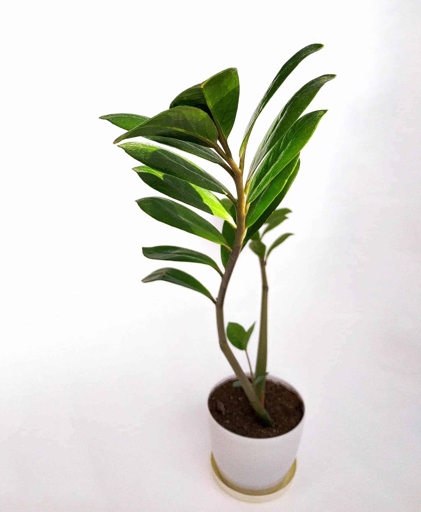
Water the plant once a week, making sure to soak the roots thoroughly. Allow the soil to dry out completely between watering to prevent root rot. It is important to water the plant deeply, but not too frequently.
Increase the frequency of watering until the plant recovers. If you notice that your zz plant is wilting or the leaves are drooping, this is a sign that the plant needs more water.
How to Fix:
There are a few simple steps you can take to save your plant. If your ZZ plant is suffering from root rot, don’t despair.
Cut away any rotten roots with a sharp knife. If they are black and mushy, they are probably rotten. First, remove the plant from its pot and inspect the roots.

Be sure to use a pot with drainage holes to allow excess water to escape. Next, replant the ZZ plant in fresh potting mix.
Allow the soil to dry out between watering to prevent the roots from rotting again. Finally, water your plant carefully.
With a little care, your ZZ plant will soon be healthy and thriving.
How to Prevent and Control Zz Plant Root Rot
Root rot can also be caused by bacteria, such as Pseudomonas and Erwinia spp. Other fungi that can cause root rot include Pythium spp., Rhizoctonia spp., and Fusarium spp. The most common cause of root rot is Phytophthora cinnamomi, which is a soil-borne fungus that attacks the roots of plants. Zz plant root rot is a common problem that can be caused by several different fungi.
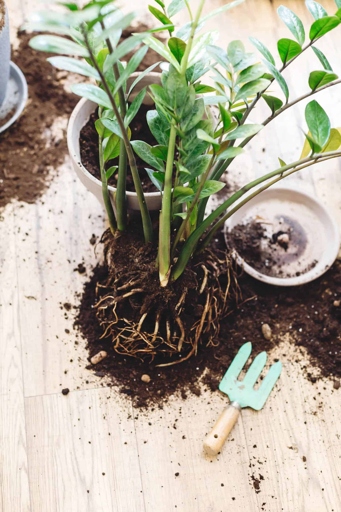
You can also try to control root rot by increasing the drainage in your potting mix. If you have root rot, you can try to save your plant by removing it from the pot and replanting it in fresh, well-drained potting mix. The best way to prevent root rot is to avoid overwatering your plants. Allow the soil to dry out between watering, and do not water your plants if the leaves are wilted. If you suspect that your plant has root rot, you can try to control the fungus by applying a fungicide to the soil. Add perlite or sand to your potting mix to improve drainage. There are several ways to prevent and control root rot. Be sure to follow the directions on the label carefully.
Avoid Waterlogging
This can happen even if the plant is not sitting in water. Waterlogging is one of the main reasons why plants succumb to root rot. When the roots of a plant are constantly wet, they begin to break down and rot. If you think your plant is waterlogged, there are a few things you can do to save it.
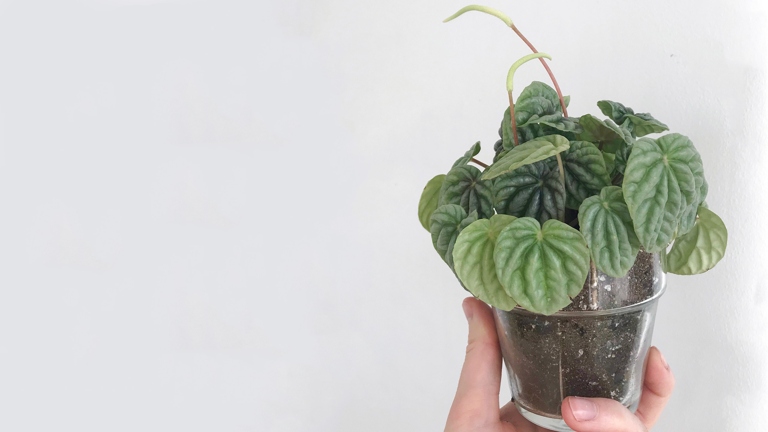
If the roots are already rotted, you may need to cut them away. Finally, give the plant plenty of light. If possible, move it to a sunny spot. Next, replant the plant in fresh, dry soil. Be sure to water it regularly, but do not overwater. First, try to remove the plant from the water.
With a little care, you can save your plant from waterlogging. By taking action quickly, you can prevent the roots from rotting and keep your plant healthy.
Watering Schedule
Water your plant every 2-3 weeks, allowing the soil to dry out in between waterings. When it comes to watering your Zz plant, it is important to stick to a schedule. If you notice the leaves of your plant starting to droop, that is a sign that it is time to water.
Root rot is a serious issue that can kill your plant. If you notice any signs of root rot, such as yellowing leaves, wilting, or mushy roots, it is important to take action immediately. Over-watering is one of the main causes of root rot in Zz plants.
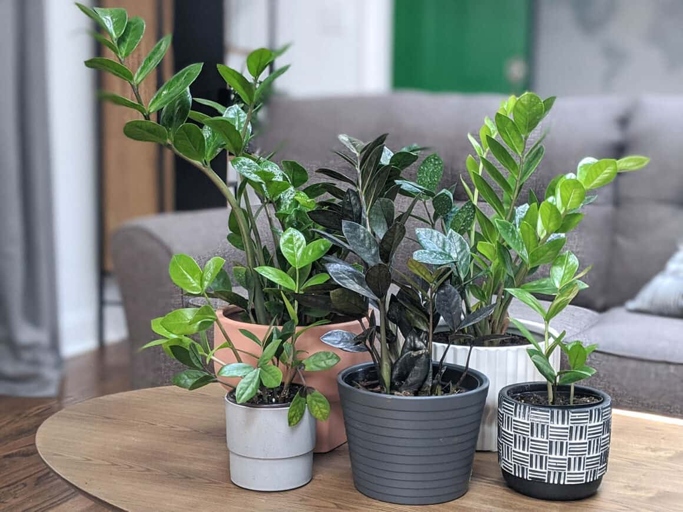
To save your Zz plant from root rot, start by watering it less frequently. Allow the soil to dry out completely between waterings. If the roots are already mushy or rotted, you may need to repot your plant in fresh, dry soil.
Appropriate Soil Mix
When it comes to soil mix, there are a few things you need to keep in mind for your Zz plant. The first is that the mix should be well-draining. This is because Zz plants are heavy feeders and need a lot of nutrients. And finally, the mix should be high in organic matter. The second is that the mix should be slightly acidic. This is important because Zz plants are susceptible to root rot. This is because Zz plants prefer slightly acidic soil.
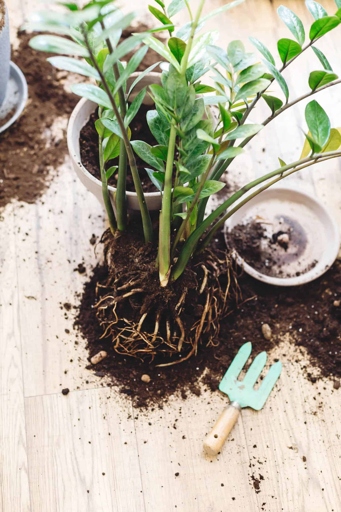
They will be able to help you find a mix that is well-suited for your Zz plant. When it comes to finding the right soil mix, your best bet is to ask your local nursery or garden center.
Choose the Right Pot
And finally, you need to consider the color of the pot. When it comes to choosing the right pot for your Zz plant, there are a few things you need to take into consideration. A pot with drainage holes in the bottom is ideal. As such, they do not like to sit in wet, soggy soil. A dark pot will help to camouflage the plant’s leaves, which are often variegated with shades of green and white. The first is the size of the pot. It’s important to choose a pot that is big enough to accommodate the plant’s root system, but not so big that the plant is dwarfed by it. Zz plants are native to Africa, where they grow in sandy, well-drained soil. The second is the material of the pot.
Apply Fungicide as a Preventive Measure
When it comes to saving your Zz plant from root rot, applying fungicide is a preventative measure that can help. Here are a few tips on how to apply fungicide to your Zz plant: By applying fungicide to the roots of your plant, you can help to prevent the spread of root rot and keep your plant healthy.
1. water the plant thoroughly before applying the fungicide
2. mix the fungicide according to the manufacturer’s instructions
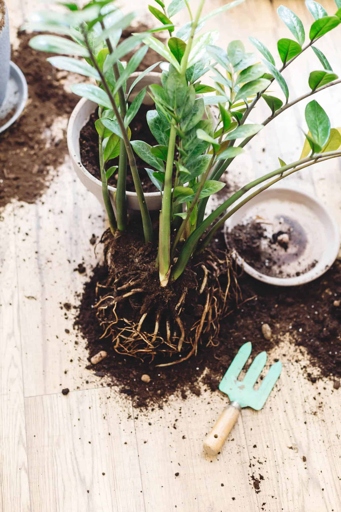
3. apply the fungicide to the roots of the plant, being sure to cover the entire root system
4. allow the plant to dry completely before replanting
By following these simple steps, you can help to prevent root rot from taking over your Zz plant.
Provide Enough Light
If your zz plant is suffering from root rot, it’s likely because it’s not getting enough light. However, even these plants need a little light to stay healthy. Zz plants are known for their tough nature and ability to survive in low-light conditions.

If you can’t provide more light, try increasing the amount of time you’re giving your plant to soak up light each day. To save your plant, move it to a spot that gets more light. You may also need to increase the frequency of watering to prevent the roots from drying out.
With a little extra care, your zz plant will soon be back to its healthy self.
Final Words
The first step is to remove the plant from its pot and inspect the roots. If you see any that are black or mushy, they need to be removed. If you notice that your plant is wilting or that the leaves are turning yellow, it’s time to take action. When it comes to saving your Zz plant from root rot, the most important thing is to act quickly. Once you’ve done that, you can replant the Zz plant in fresh potting mix and water it well.

By removing the affected roots and replanting in fresh potting mix, you can give your plant a new lease on life. With a little care and attention, your Zz plant will soon be looking as good as new. Root rot can be a serious problem for Zz plants, but it is possible to save them if you act quickly.
Frequently Asked Questions
1. What is Zz plant?
Zz plant is a tropical, evergreen plant that is native to eastern Africa. It is a member of the aroid family and is known for its glossy, dark green leaves.
2. What causes root rot in Zz plants?
Root rot is caused by a fungus that attacks the roots of the plant. The fungus thrives in wet, humid conditions and can quickly kill the plant if not treated.
3. How can I tell if my Zz plant has root rot?
There are a few signs that your Zz plant has root rot. The leaves of the plant may turn yellow or brown, and the stems may become soft and mushy. The plant may also lose its vigor and stop growing.
4. How do I treat root rot in my Zz plant?
The first step is to remove the plant from the pot and inspect the roots. If the roots are black and mushy, they will need to be cut away. Once the diseased roots have been removed, the plant can be replanted in fresh potting mix.
5. How can I prevent root rot in my Zz plant?
There are a few things you can do to prevent root rot in your Zz plant. First, make sure that the pot has drainage holes to allow water to drain away from the roots. Second, do not overwater the plant and allow the soil to dry out between waterings. Third, avoid placing the pot in a location where it will be exposed to direct sunlight or drafts.
Final thoughts
If you think your Zz plant has root rot, don’t despair. With a little care, you can save your plant. First, check the roots. If they’re mushy or black, they’re probably rotted. Cut away the rotted roots, being careful not to damage the healthy roots. Next, replant your Zz plant in fresh, well-draining potting mix. Water it thoroughly, then let the soil dry out completely before watering again. With a little care, your Zz plant will soon be healthy and thriving.
